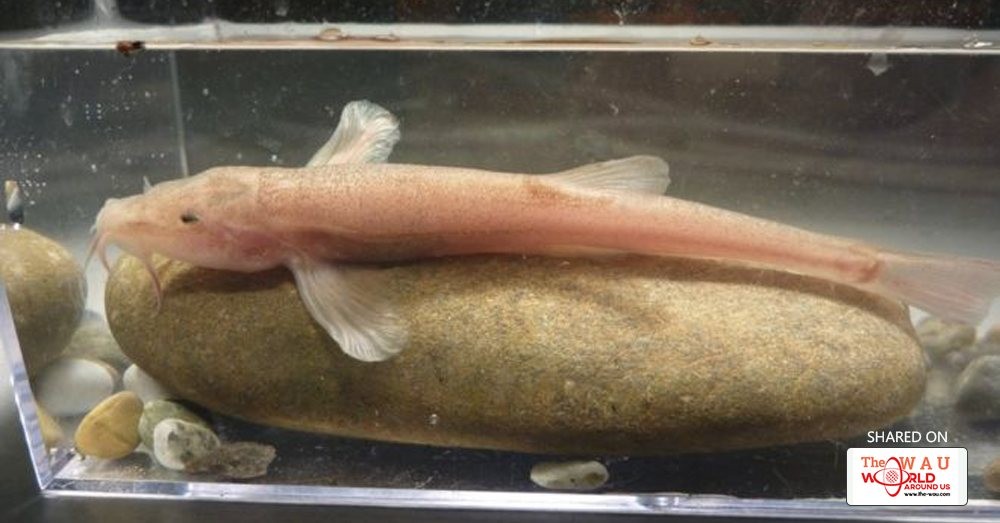Researchers say the creature was found by divers in a huge underground cavern in southern Germany.
Experts believe that these loaches are the most northerly species of cave fish ever discovered.
They think they separated from surface-dwelling fishes some time over the past 20,000 years.
Diving discovery
Scientists say that there are some 200 species of cave fish living in various parts of the world, but none had been found in Europe until now.
There are some 400 different cave-dwelling creatures in the Western Balkans, including the famous olm, a blind salamander.
Experts believed if a cave fish were ever to be found in Europe it would most likely be in that region so they were astonished to discover one, much further north, in the south of Germany.
The cave loach was first seen by a diver called Joachim Kreiselmaier back in 2015.
He was exploring in the Danube-Aach cave system when he saw the fish and happened to have a camera to photograph it. He showed the picture to Dr Jasminca Behrmann-Godel, an expert in fish evolution at the University of Konstanz in south-west Germany.
"When I saw the photo I wasn't sure it was really something special," she told.
"Then he brought me a live specimen and that was like the bang. That was the moment we realised that this was something really new!"
The divers have observed about 150 of the fish in their journeys to the cave and five have now been brought back for studying in the laboratory - not an easy task.
"No more than 30 divers have ever reached the place where the fish have been found," Joachim Kreiselmaier said.
"Due to the usually bad visibility, strong current, cold temperature, and a labyrinth at the entrance, most divers do not come back again for diving."
Surface cousins
Genetic analysis suggests the cave dwellers are closely related to stone loaches found in the nearby rivers, the Danube and the Radolfzeller Aach. However the scientists are unsure if they can be classed as a distinct species.
"The first thing you see is that they are pale, they appear a bit rose, or pinkish, because you can see the blood vessels through the skin," said Dr Behrmann-Godel.
"The eyes are still there, only about half the size of the surface fish population. If you put a light on them they don't react so we are not sure if they are still functioning. There is a change going on from the optical sense to some other perception capabilities."
While the cave system formed some 400-500,000 years ago, it is only since the last glacial period some 20,000 years ago that saw the opening of the Aach spring by the retreating Alpine glacier which allowed the first colonisation of the cave system with fish.
In evolutionary terms, this is very recent and it puts the German discovery at the younger end of the scale of cave fish worldwide.
Cave loaches have also been found much further north than other species. A team of researchers in Pennsylvania argued that their discovery of cave sculpins around 14 years ago was probably the furthest north that cave fish would ever be found. The German ones however are some 760km (470 miles) further north.
While only a small portion of the 250 sq km underground home of the cave loach can be explored by divers, the researchers believe there may be thousands of more of these pale, pink creatures living undisturbed in the region.
And they may not be the last cave fish species to be discovered says Dr Behrmann-Godel.
"We never would have expected something like this so there may be some other things out there."
Share This Post












